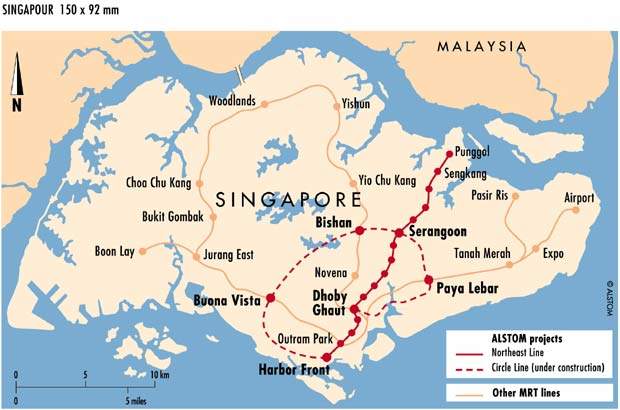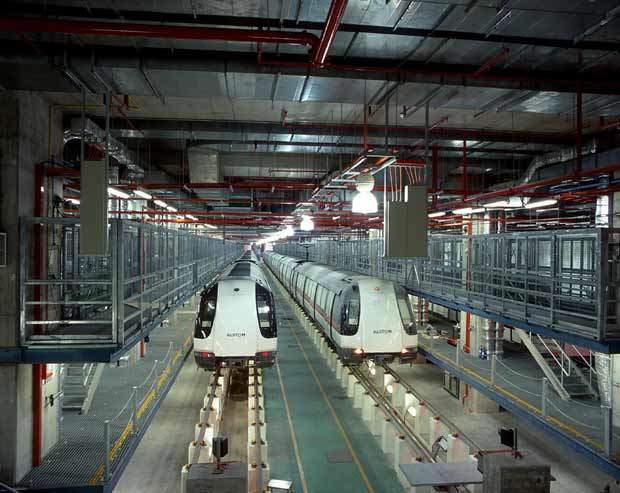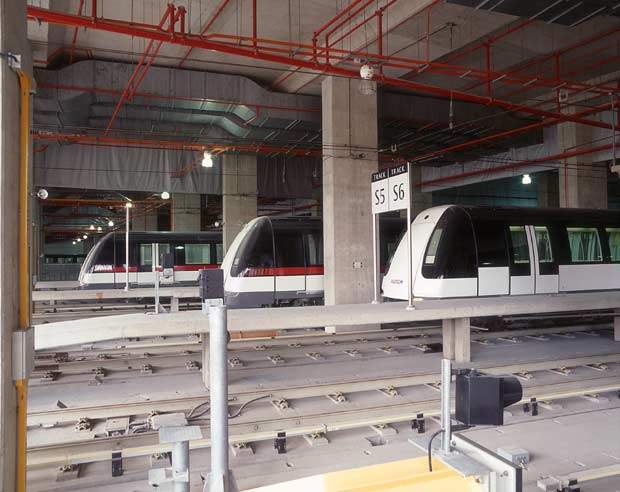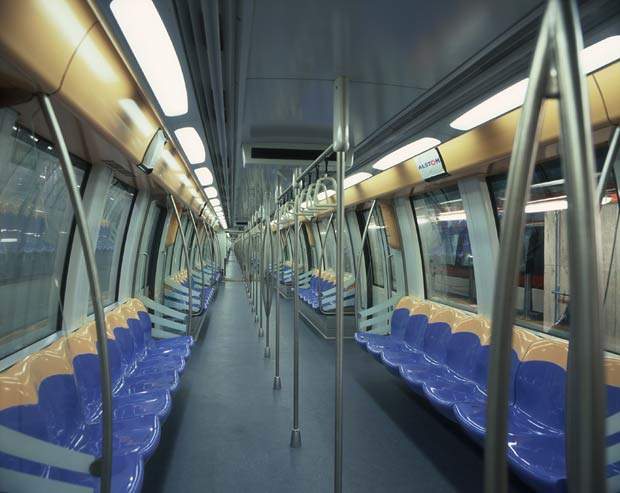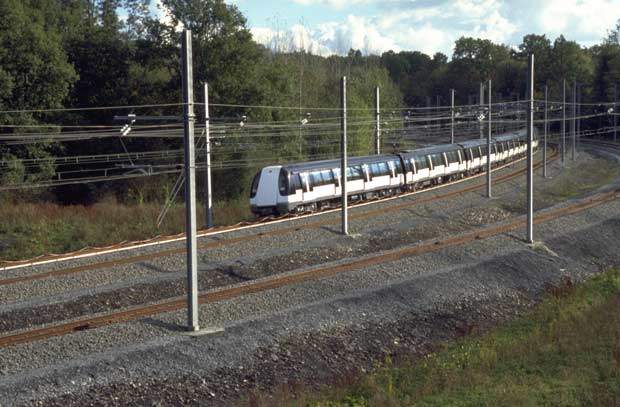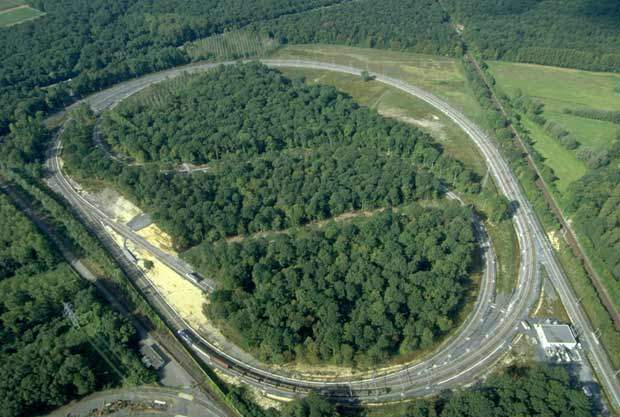The island of Singapore is densely populated and highly urban, and great economic growth experienced over the last two decades has demanded major improvements in public transport. The government set up the Land Transport Authority (LTA) in September 1995 to provide a highly efficient, comfortable, safe and convenient transport system at an affordable price.
The long-term plan is to have 540km of passenger railway. There are currently six lines, the North-South, East West and NorthEast lines, Bukit Panjang, Sengkang (East), and Sengkang (West).
Northeast line infrastructure
The LTA received approval to begin construction of the Northeast Line (NEL) on 16 January 1996, and after seven years work the 20km (12.5 mile) line was commissioned on 20 June 2003.
The world’s first fully automatic heavy rail metro, it runs from Punggol in the north east to the Harbor Front in the south, and has the highest passenger capacity. It was constructed at a cost of $4.6bn.
The route is entirely underground and passes through the central business district, following the transport corridors of Serangoon Road and Upper Serangoon Road to the new towns of Hougang, Sengkang and Punggol.There are 16 stations, all in tunnel, with platform screen doors for maximum protection. The system operator is SBS Transit.
NEL rolling stock
French-based Alstom was hired by the LTA to manage the project and provide the rolling stock and control equipment.
The 25 trains, which run in six-car formations (two units coupled together), can carry up to 1,920 people. Taking power at 1,500V from the DC overhead line, they are of welded aluminium construction with external sliding doors. Maximum speed is 100km/h, although only 90km/h is reached in normal service. There is air-conditioning, a passenger information system, public address and a front-end detrainment door. There is wide gangway access throughout the length of the trainset, good acoustic ergonomy and a fully equipped driver’s desk for manual operation at full speed. An underframe fire barrier is designed to last for one hour and there is a comprehensive fire and smoke detection system. All train status information and data is managed by the control centre.
There are two CCTV cameras (video-surveillance) in every car and the leading bogies on each of the leading cars are fitted with an obstacle deflector/detector system. Should a train touch anything lying across the track, the brakes are applied immediately.
Every major critical component has been duplicated to improve reliability. For example, on-board batteries can take extended loads to ensure train equipment continues to function in case of primary power loss. Cabin lighting, ventilation, on-board computers, automatic train control systems, radio and train-to-track links, the CCTV network, public address and passenger information systems all remain active for at least one hour.
A full scale model of the train was delivered from France in July 1999 to validate the interior design and the results of a public questionnaire led to changes in the interior design and layout.
Alstom’s test track in Valenciennes (France) enabled the company to deliver rolling stock ready for operation and avoid transport and other costs for testing abroad. The tests covered 1,500 scenarios ranging from failure of a simple component to a major breakdown.
NEL signalling / communications
The Northeast Line employs a complex electronics system that powers the trains and keeps constant tabs on all its on-board functions ranging from braking to air-conditioning. The control centre in Sengkang monitors the health of all the sub-systems.
Alstom’s MASTRIA strategy uses automatic moving-block technology with two-way digital transmission with Automatic Train Protection (ATP) to eliminate the risks of collisions and derailments, an Automatic Train Operation System (ATO) which drives the metro and Train Data Management System (TDMS) to concentrate and dispatch the rolling stock information with fixed equipment. A Waveguide information network has the capability to transmit video and is almost maintenance-free. Base stations are located within the signalling equipment room.
The control centre can decide whether to pull the train out of service at its next stop or wait until the end of the day’s revenue service before it is sent to the depot for repair.
Trains can travel as close as 90 seconds apart at 90km/h, compared to two minutes and 80km/h on other lines. Extra trains can be safely introduced into service at any moment to increase passenger capacity almost instantaneously.
The future
There are no plans at present to extend the NEL, although the LTA constructed the new Circle Line which, whilst running with a third electrified rail instead of overhead, features much of the same technology.
The initial 5.2km section of the Circle Line (Dhoby Ghaut, Museum, Convention Centre, Millennia, Nicoll Highway and Stadium Boulevard) was opened in April 2010. The second phase, stretching from Stadium Boulevard to Bartley Road was also opened along with the first section. The third phase (5.7km) with five stations stretching through Bartley Road, Serangoon (interchange with NorthEast Line), Lorong Chuan, Bishan (interchange with North-South Line) and Marymount Road opened in May 2009.
Phases four and five, with a total route length of 17km and 13 stations, opened in October 2011.
Three new rail lines will be built over the next 15 years to serve Bukit Timah, Jurong and estates in the eastern part of Singapore.
In February 2012, the LTA awarded a €240m contract to Alstom for acquiring 18 NEL trains and 16 Circle Line (CCL) trains to improve the network of both the lines. Deliveries are expected to start from 2015.

